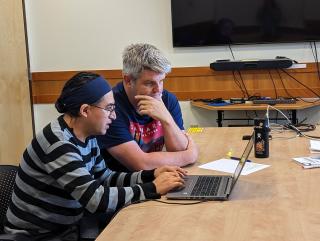Study tour with Forest Service strengthens Peru's fire forecasting system
MONTANA — Experts from the National Meteorology and Hydrology Service of Peru, or SENAMHI, recently spent two weeks at the Missoula Fire Science Laboratory where they pored over fire forecasting models and looked for ways to improve Peru’s fire forecasting system. They were expertly guided by Forest Service fire ecologists. The Peruvian team then spent a week in Arizona and New Mexico visiting emergency operations centers to learn about how fire weather forecasting information is used to help safeguard firefighters and the public.
The number of wildland fires in Peru has increased significantly over the past 20 years, particularly in the Andean region. The fires damage forests and properties, threaten lives and health of people and animals, and influence global climate.
Fire forecasting systems analyze weather and climate, fuels and fire activity to help decision makers pre-position and distribute firefighting assets and improve their fire management strategies. The results of these actions save property and lives.
"It's important to share what we know and also to be open and learn from each other. Ultimately it makes us appreciate how big and how important the wildfire problem is around the world and it creates connections that will last forever," said Forest Service Fire Ecologist Dr. Matt Jolly, who has been offering international assistance in fire forecasting for 15 years.
SENAMHI is Peru’s lead agency for fire forecasting and will use the knowledge gained in the Forest Service exchange to implement final improvements to its forecasting systems. Its goal is to have a national-level, real-time weather forecasting platform that can accurately reflect meteorological changes and save lives.

Blanca Ponce, a member of the regional fire program and a participant of the study tour, highlighted the importance of knowledge exchange between countries.
"The initiative has allowed us to finalize and apply all the work of these recent years. We have a better understanding of the index and its components,” said Ponce.
"One of the missions of the SENAMHI service is to generate information for the population and it is something that is relevant to each of us to see how the information can help the public," said Alan Llacza, who was part of the team from Perú where he works as an advanced analyst in long-term numerical modeling of weather and climate.
The SENAMHI study tour is being supported by Forest Service International Programs which implements the U.S. Agency for International Development’s South America Regional Fire Program.


